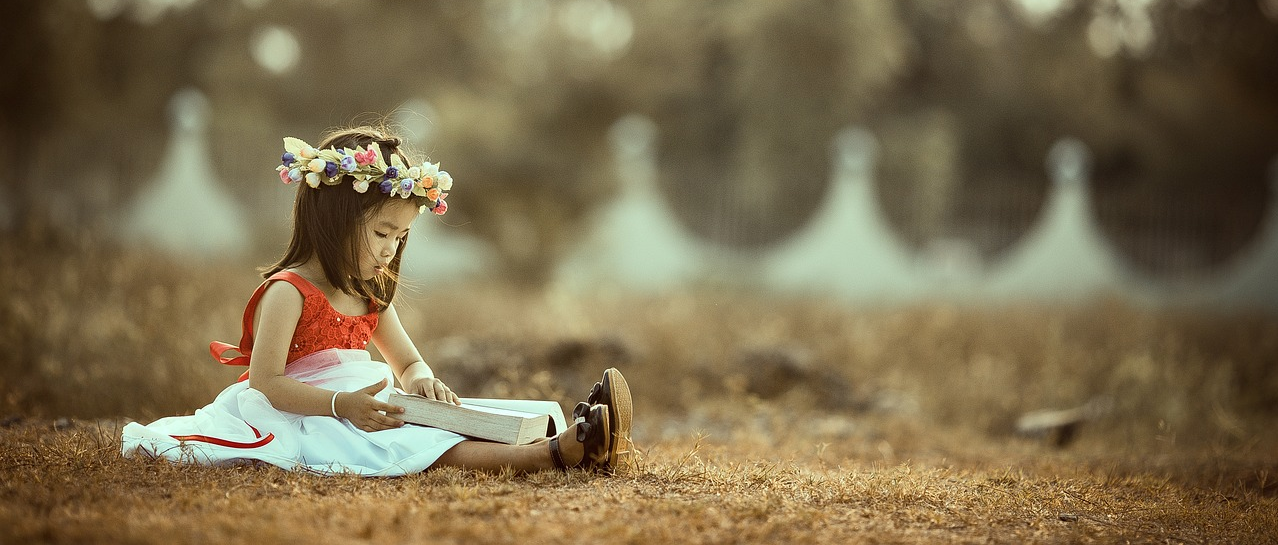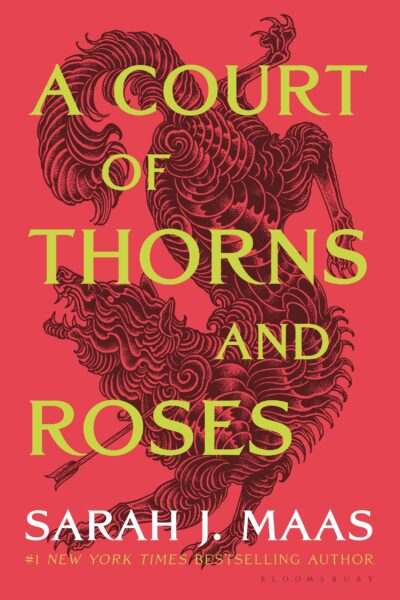A Court of Thorns and Roses
Chapter 11
by Maas, Sarah J.The chapter opens with the protagonist hastily preparing to escape, layering clothes and hiding a stolen knife in her boot. Her father has unexpectedly arrived to rescue her from Tamlin’s estate, sparking hope for a new life far away. Despite her father’s physical limitations, she is moved by his effort and imagines possibilities like a hidden ship or sold cottage to facilitate their escape. The tension builds as she surveys the grounds, noting the silent house and her father waiting by the hedge, urging her to hurry.
As she climbs down the trellis and follows her father toward the gates, her excitement is tempered by practical concerns—his lack of winter clothing and the mystery of how he arrived. She moves stealthily, avoiding moonlight, while her father surprisingly speeds toward the forest. The protagonist’s internal monologue reveals her desperation to flee Tamlin and the looming threat of the blight. Her hope peaks as they near the open gates, but her relief is shattered when Tamlin abruptly intercepts her, his claws and fangs bared in fury.
Tamlin reveals the cruel illusion: the “father” was a shapeshifting creature luring her to her doom. He chastises her for falling prey to the deception, warning of far deadlier dangers in the woods at night. The protagonist’s terror turns to defiance as she confronts Tamlin, accusing him of trapping her under the Treaty’s unjust terms. She passionately defends her vow to her mother to protect her family, refusing to accept that her stay with Tamlin fulfills that promise. Their exchange highlights her internal conflict between duty and desire for freedom.
Tamlin counters that her family is now well cared for, fulfilling her vow better than she could alone. Though skeptical, the protagonist grapples with the possibility that her sacrifice has secured their safety. The chapter ends with her lingering doubt and Tamlin’s ambiguous reassurance, leaving her torn between resentment and reluctant acceptance. The emotional weight of her choices—and the cost of her loyalty—resonates as she questions the significance of her past struggles and dreams.
FAQs
1. What supernatural creature does Feyre encounter at the gates, and how does Tamlin explain its danger?
Answer:
Feyre encounters a shapeshifting supernatural creature at the gates that initially appears as her father, then morphs into other forms like her sisters and a pack of supplies. Tamlin reveals it is a deceptive entity that preys on human senses, warning Feyre it would have “taken a good, long while devouring you.” This highlights the chapter’s theme of illusion versus reality in the faerie realm. Tamlin emphasizes the creature’s danger by contrasting it with the Bogge, implying there are even worse threats in the woods at night (Chapter 11, pages 96-97).2. Analyze Feyre’s conflicting emotions about her family. How does this internal struggle drive her actions in the chapter?
Answer:
Feyre’s desperation to fulfill her vow to her dying mother—to protect her family—overrides her logic, causing her to blindly follow the illusion of her father. Her layered emotions include guilt (“I made a promise”), resentment (“insignificant as I was”), and longing (“my dream—no one else’s”). This conflict manifests in her reckless escape attempt, revealing how her human attachments make her vulnerable to supernatural manipulation. Only when Tamlin asserts her family is “fed and comfortable” does she begin reconciling her vow with her new reality (Chapter 11, pages 97-98).3. How does Tamlin’s reaction to Feyre’s escape attempt reveal both his authority and his growing complexity as a character?
Answer:
Tamlin’s response blends menace and reluctant care. His claws and fangs emerge, showing his predatory nature (“He was going to kill me”), yet he chooses to educate rather than punish Feyre. His rhetorical question—”Weren’t you warned to keep your wits about you?“—underscores his role as both enforcer and protector. The detail that his claws retract before his fangs suggests controlled anger. His final argument about her family’s welfare reveals a strategic empathy, acknowledging her motives while asserting his terms (Chapter 11, pages 96-98).4. Evaluate the significance of the shapeshifting creature’s transformations. What thematic purpose do they serve?
Answer:
The creature’s sequential illusions—first Feyre’s father, then a bow/arrows, then her weeping sisters—mirror her deepest desires and fears. This progression reflects the chapter’s exploration of deception: the faerie realm exploits human vulnerability by weaponizing emotional attachments. The mountain ash bow/arrows (tools of survival) and her sisters (symbols of failed protection) specifically target Feyre’s identity as a provider. The transformations underscore the novel’s broader theme that appearances in Prythian are rarely trustworthy (Chapter 11, page 97).5. How does Feyre’s perspective on her “vow” evolve by the chapter’s end, and what catalyzes this change?
Answer:
Initially, Feyre views the vow as requiring her physical presence (“I can’t just give up on them”). Tamlin reframes it by proving her family’s safety transcends her direct care (“you are fulfilling it… by staying here”). This forces Feyre to confront her martyr complex—realizing her sacrifice might be unnecessary. The pivotal moment comes when Tamlin states her family is “fed and comfortable,” which aligns with her mother’s original intent. This seeds future character growth, as Feyre begins separating self-worth from suffering (Chapter 11, pages 97-98).
Quotes
1. “My father—my crippled, broken father had come.”
This moment captures Feyre’s desperate hope and emotional vulnerability as she believes her disabled father has miraculously come to rescue her from the faerie realm. The repetition emphasizes both her disbelief and deep longing for familial connection.
2. “He was going to kill me—kill me right there, and then kill my father. No more loopholes, no more flattery, no more mercy. He didn’t care anymore. I was as good as dead.”
This visceral reaction shows Feyre’s raw terror when caught escaping, revealing her fundamental fear of Tamlin’s true fae nature and the deadly stakes of their bargain. The internal monologue style makes the fear palpable.
3. “I made a promise… That I’d look after my family. That I’d take care of them. All I have done, every single day, every hour, has been for that vow.”
This quote reveals the core motivation driving Feyre’s actions throughout the story - her sacred vow to her dying mother. It explains her stubborn resistance to accepting her new life in the Spring Court.
4. “You are not breaking your vow—you are fulfilling it, and then some, by staying here. Your family is better cared for now than they were when you were there.”
Tamlin’s counterargument represents a pivotal moment where Feyre must confront whether her sacrifice is truly necessary anymore. This challenges her entire self-concept as the family’s sole provider.
5. “Fed and comfortable. If he couldn’t lie, if it was true, then… then it was beyond anything I’d ever dared hope for.”
This realization marks a turning point where Feyre begins to accept that her family might truly be safe, potentially freeing her from her burdensome vow and allowing her to consider her own needs and desires.
Quotes
1. “My father — my crippled, broken father had come.”
This moment captures Feyre’s desperate hope and emotional vulnerability as she believes her disabled father has miraculously come to rescue her from the faerie realm. The repetition emphasizes both her disbelief and deep longing for familial connection.
2. “He was going to kill me—kill me right there, and then kill my father. No more loopholes, no more flattery, no more mercy. He didn’t care anymore. I was as good as dead.”
This visceral reaction shows Feyre’s raw terror when caught escaping, revealing her fundamental fear of Tamlin’s true fae nature and the deadly stakes of their bargain. The internal monologue style makes the fear palpable.
3. “I made a promise… That I’d look after my family. That I’d take care of them. All I have done, every single day, every hour, has been for that vow.”
This quote reveals the core motivation driving Feyre’s actions throughout the story - her sacred vow to her dying mother. It explains her stubborn resistance to accepting her new life in the Spring Court.
4. “You are not breaking your vow—you are fulfilling it, and then some, by staying here. Your family is better cared for now than they were when you were there.”
Tamlin’s counterargument represents a pivotal moment where Feyre must confront whether her sacrifice is truly necessary anymore. This challenges her entire self-concept as the family’s sole provider.
5. “Fed and comfortable. If he couldn’t lie, if it was true, then… then it was beyond anything I’d ever dared hope for.”
This realization marks a turning point where Feyre begins to accept that her family might truly be safe, potentially freeing her from her burdensome vow and allowing her to consider her own needs and desires.
FAQs
1. What supernatural creature does Feyre encounter at the gates, and how does Tamlin explain its danger?
Answer:
Feyre encounters a shapeshifting supernatural creature at the gates that initially appears as her father, then morphs into other forms like her sisters and a pack of supplies. Tamlin reveals it is a deceptive entity that preys on human senses, warning Feyre it would have “taken a good, long while devouring you.” This highlights the chapter’s theme of illusion versus reality in the faerie realm. Tamlin emphasizes the creature’s danger by contrasting it with the Bogge, implying there are even worse threats in the woods at night (Chapter 11, pages 96-97).
2. Analyze Feyre’s conflicting emotions about her family. How does this internal struggle drive her actions in the chapter?
Answer:
Feyre’s desperation to fulfill her vow to her dying mother—to protect her family—overrides her logic, causing her to blindly follow the illusion of her father. Her layered emotions include guilt (“I made a promise”), resentment (“insignificant as I was”), and longing (“my dream—no one else’s”). This conflict manifests in her reckless escape attempt, revealing how her human attachments make her vulnerable to supernatural manipulation. Only when Tamlin asserts her family is “fed and comfortable” does she begin reconciling her vow with her new reality (Chapter 11, pages 97-98).
3. How does Tamlin’s reaction to Feyre’s escape attempt reveal both his authority and his growing complexity as a character?
Answer:
Tamlin’s response blends menace and reluctant care. His claws and fangs emerge, showing his predatory nature (“He was going to kill me”), yet he chooses to educate rather than punish Feyre. His rhetorical question—”Weren’t you warned to keep your wits about you?“—underscores his role as both enforcer and protector. The detail that his claws retract before his fangs suggests controlled anger. His final argument about her family’s welfare reveals a strategic empathy, acknowledging her motives while asserting his terms (Chapter 11, pages 96-98).
4. Evaluate the significance of the shapeshifting creature’s transformations. What thematic purpose do they serve?
Answer:
The creature’s sequential illusions—first Feyre’s father, then a bow/arrows, then her weeping sisters—mirror her deepest desires and fears. This progression reflects the chapter’s exploration of deception: the faerie realm exploits human vulnerability by weaponizing emotional attachments. The mountain ash bow/arrows (tools of survival) and her sisters (symbols of failed protection) specifically target Feyre’s identity as a provider. The transformations underscore the novel’s broader theme that appearances in Prythian are rarely trustworthy (Chapter 11, page 97).
5. How does Feyre’s perspective on her “vow” evolve by the chapter’s end, and what catalyzes this change?
Answer:
Initially, Feyre views the vow as requiring her physical presence (“I can’t just give up on them”). Tamlin reframes it by proving her family’s safety transcends her direct care (“you are fulfilling it… by staying here”). This forces Feyre to confront her martyr complex—realizing her sacrifice might be unnecessary. The pivotal moment comes when Tamlin states her family is “fed and comfortable,” which aligns with her mother’s original intent. This seeds future character growth, as Feyre begins separating self-worth from suffering (Chapter 11, pages 97-98).



0 Comments